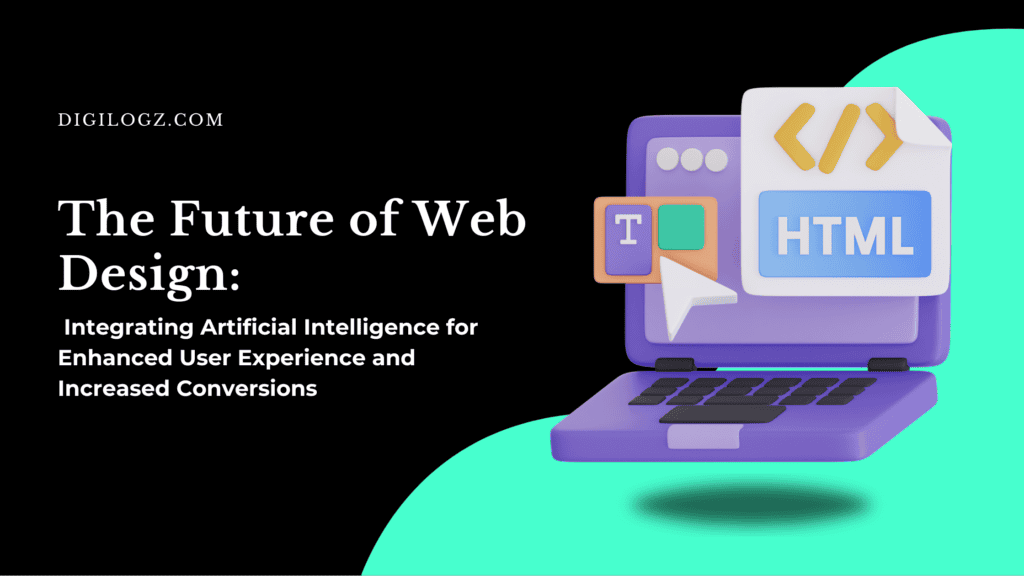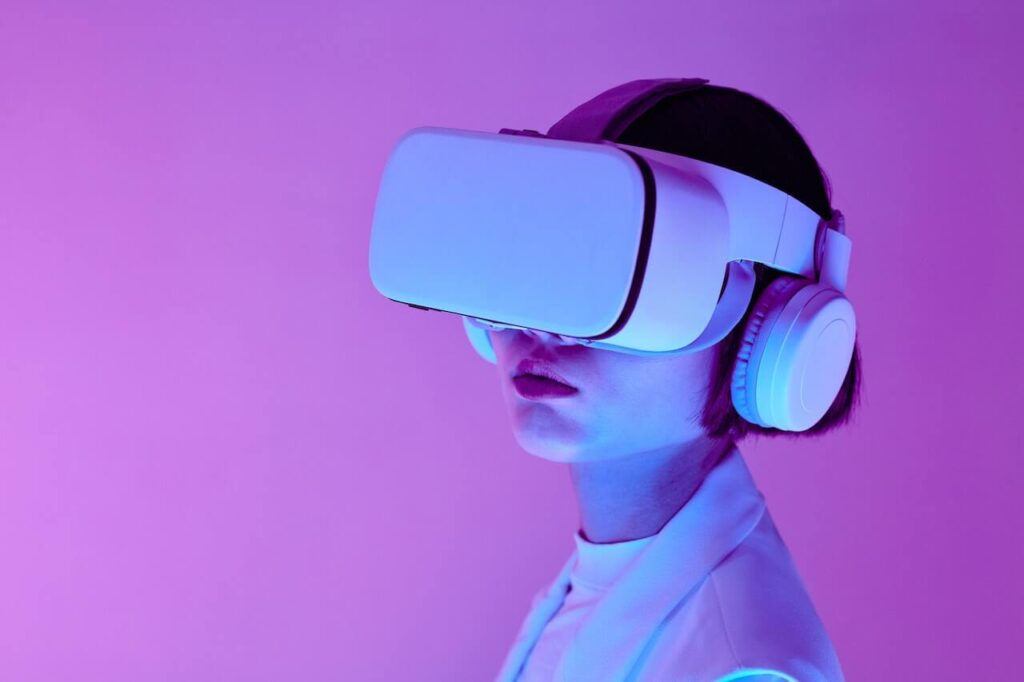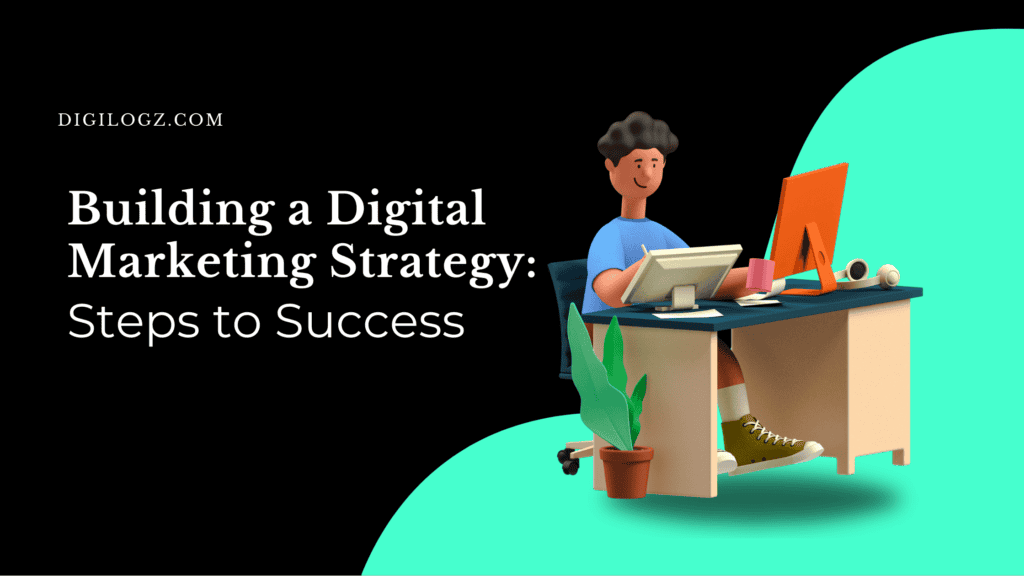In an ever-evolving digital landscape, the significance of web design cannot be overstated. Websites serve as the virtual storefronts of businesses, the first point of contact for potential customers, and the primary platform for engaging existing ones. As technology continues to advance at a rapid pace, the integration of artificial intelligence (AI) into web design emerges as a game-changer, promising to redefine user experience, optimize site performance, and ultimately drive conversions. In this comprehensive 1500-word guide, we delve into the transformative potential of AI in web design, exploring its applications, practical implementations, and anticipated future developments.
The Transformative Potential of AI in Web Design:
AI holds immense promise for revolutionizing web design in numerous ways. At its core, AI empowers designers to automate repetitive tasks, glean insights from data, and deliver personalized experiences tailored to individual users. This section explores the multifaceted applications of AI in web design, highlighting its role in advanced content generation, image recognition, intelligent UI design, and machine learning-based UX optimization.

Advanced Content Generation:
One of the most time-consuming aspects of web design is content creation. AI-powered content management systems like Articoolo and Wordsmith alleviate this burden by employing natural language processing algorithms to generate high-quality, SEO-optimized content. These systems analyze vast amounts of data to craft relevant, engaging content that resonates with target audiences, thereby improving search engine rankings and driving organic traffic to websites.
Image Recognition and Classification:
Visual content plays a crucial role in capturing users’ attention and conveying information effectively. AI-powered image recognition tools such as Clarifai and Adobe Sensei enable designers to analyze visual content in real-time, facilitating the creation of dynamic, personalized user experiences. By understanding the context and content of images, designers can tailor website interfaces to match users’ preferences, thereby enhancing engagement and fostering brand loyalty.
Intelligent UI Design:
The user interface (UI) is the gateway to the digital experience, influencing users’ perceptions and interactions with a website. AI-driven design tools like Wix ADI and Adobe Sensei leverage machine learning algorithms to analyze user behavior and preferences, generating intelligent UI designs that adapt seamlessly to varying contexts. These designs prioritize usability and accessibility, resulting in enhanced engagement, higher conversion rates, and improved overall user satisfaction.
Comparative Analysis of AI-Powered Content Generation Tools:
| Tool Name | Key Features | Pros | Cons |
| Articoolo | Natural language processing, SEO optimization | Automated content generation, Time-saving | Limited customization options, Subscription-based pricing |
| Wordsmith | Natural language generation, Data-driven | Highly customizable content, Seamless integration | Learning curve for new users, Limited language support |
| Grammarly | Grammar and style suggestions, Plagiarism check | Improves content quality, Real-time feedback | Limited to text editing, Premium features require subscription |
| Quill | Narrative storytelling, Data visualization | Engaging content creation, Multilingual support | Limited customization options, Higher pricing tier |
| Article Forge | AI content generation, SEO optimization | Quick content creation, Broad topic coverage | Quality may vary, Limited control over output |
Machine Learning-Based UX Optimization:
User experience (UX) optimization is a continuous process that involves analyzing user behavior, identifying pain points, and implementing iterative improvements. AI technologies such as Google Analytics’ machine learning algorithms and heatmapping tools like Crazy Egg enable designers to gain valuable insights into user interactions with websites. By understanding how users navigate and engage with content, designers can make data-driven decisions to optimize UX, thereby maximizing conversions and driving business growth.
Comparison of AI-Driven UX Optimization Tools:
| Tool Name | Key Features | Pros | Cons |
| Google Analytics | Machine learning algorithms, User behavior analysis | Robust analytics platform, Free to use | Steep learning curve for new users, Limited customization options |
| Crazy Egg | Heatmapping, User session recordings | Visual representation of user behavior, Easy-to-understand reports | Limited to website analysis, Requires subscription for advanced features |
| Hotjar | Heatmapping, User feedback collection | Comprehensive user feedback tools, Easy-to-use interface | Limited analytics capabilities, Pricing based on usage volume |
| FullStory | Session replay, Error tracking | Detailed session recordings, Granular user behavior analysis | Premium features require subscription, Learning curve for new users |
| Mixpanel | Event tracking, User segmentation | Advanced analytics capabilities, Real-time data visualization | Limited to event-based tracking, Pricing based on usage volume |
Integrating AI Technologies into Your Web Design Process:
Successfully incorporating AI into the web design process requires a strategic approach that balances automation with human creativity. This section provides practical guidelines for integrating AI technologies into the web design workflow, from assessing needs and choosing the right tools to implementing changes incrementally and maintaining a balance between automation and creativity.
Benefits of AI-Powered Web Design:
- Automation of repetitive tasks saves time and resources.
- Data-driven insights lead to more informed design decisions.
- Personalized user experiences enhance engagement and loyalty.
- Improved site performance contributes to higher conversion rates.
- Adaptability to changing user behaviors and market trends ensures long-term relevance.
Assess Your Needs:
Before integrating AI into your web design process, it’s essential to clearly define your objectives and identify areas where AI can add value. Whether it’s automating repetitive tasks, enhancing personalization, or optimizing user experience, understanding your specific needs will guide your decision-making process and ensure that AI investments yield tangible benefits.
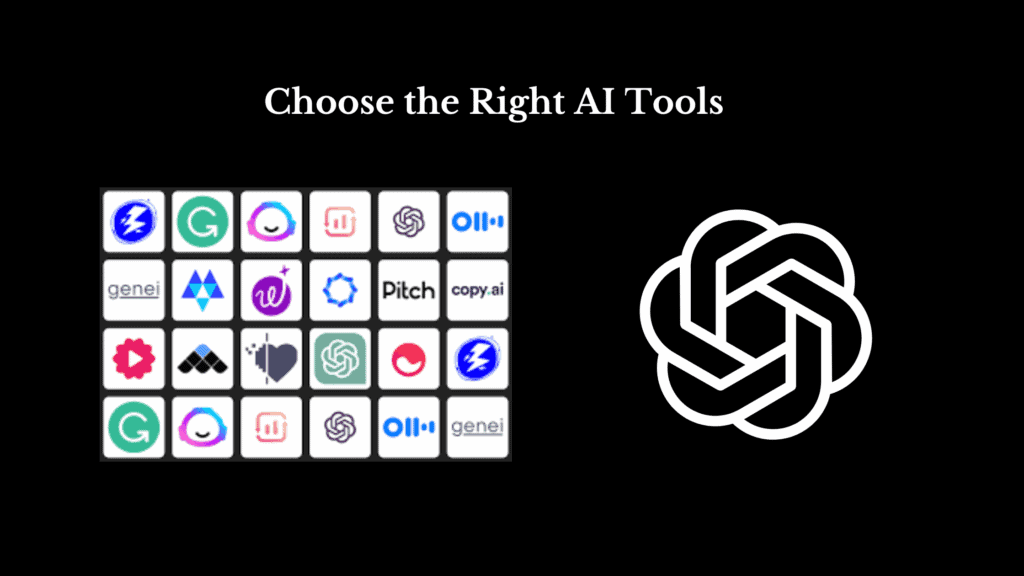
Choose the Right AI Tools:
With a plethora of AI-powered technologies and platforms available, selecting the right tools can be a daunting task. It’s crucial to evaluate each tool based on its functionality, ease-of-use, and compatibility with existing workflows. Consider conducting thorough research, seeking recommendations from industry experts, and testing out different tools before making a final decision.
| Tool Name | Key Features | Pros | Cons |
| Articoolo | Natural language processing, SEO optimization | Automated content generation, Time-saving | Limited customization options, Subscription-based pricing |
| Wordsmith | Natural language generation, Data-driven | Highly customizable content, Seamless integration | Learning curve for new users, Limited language support |
| Grammarly | Grammar and style suggestions, Plagiarism check | Improves content quality, Real-time feedback | Limited to text editing, Premium features require subscription |
| Quill | Narrative storytelling, Data visualization | Engaging content creation, Multilingual support | Limited customization options, Higher pricing tier |
| Article Forge | AI content generation, SEO optimization | Quick content creation, Broad topic coverage | Quality may vary, Limited control over output |
Implement Incrementally:
Introducing AI technologies into your web design process should be done gradually, focusing on specific tasks and components to ensure a smooth transition and minimize disruption. Start by identifying low-risk areas where AI can have an immediate impact, such as automating simple tasks or enhancing content personalization. As your team becomes more comfortable with AI technologies, gradually expand their usage to more complex tasks and processes.
Balance Automation and Creativity:
While AI can automate and optimize various aspects of web design, it’s essential to maintain a balance between automation and human creativity. While AI can streamline workflows and increase efficiency, it’s crucial to remember that creativity and empathy are at the heart of exceptional design. Ensure that AI augments rather than replaces the creative intuition and human touch that define memorable user experiences.
Anticipating Future Developments in AI-Driven Web Design:
As AI technologies continue to evolve, the future of web design holds exciting possibilities. This section explores anticipated trends and developments in AI-driven web design, from conversational AI and enhanced personalization to augmented reality integration and AI-enabled accessibility. By staying abreast of these developments, designers can position themselves at the forefront of innovation and drive business growth in the digital age.
Challenges and Considerations in Adopting AI in Web Design:
- Initial investment in AI technology and training may be substantial.
- Ensuring data privacy and security when leveraging user data.
- Balancing automation with human creativity to maintain brand identity.
- Addressing potential biases in AI algorithms to ensure fairness and inclusivity.
- Keeping up with rapid advancements in AI technology and best practices.
Conversational AI and Voice-Assisted Browsing:
With the rise of voice assistants like Amazon Alexa and Google Assistant, conversational AI is poised to play an increasingly significant role in web design. Websites will increasingly incorporate voice-enabled interfaces, enabling users to navigate and interact with content using natural language commands. By embracing conversational AI, designers can create more intuitive and engaging user experiences that cater to the preferences and behaviors of modern consumers.
Enhanced Personalization and Contextual Awareness:
As AI-driven analytics and user tracking technologies advance, web designers will have access to increasingly granular insights into user behavior and preferences. This wealth of data will enable designers to create more personalized and contextually-aware experiences that adapt dynamically to each user’s unique needs and preferences. From personalized recommendations to location-based content, AI-powered personalization will enable designers to deliver highly relevant and engaging experiences that resonate with users on a deeper level.
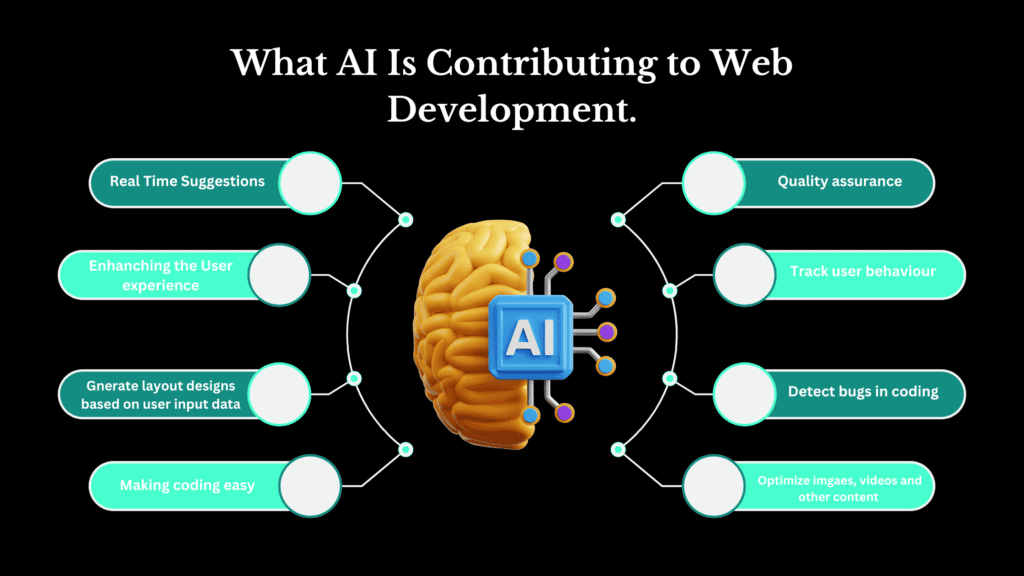
Future Trends in AI-Driven Web Design:
- Integration of AI with augmented reality (AR) and virtual reality (VR) for immersive experiences.
- Continued advancements in conversational AI for natural language interaction.
- Expansion of AI-driven personalization to include real-time contextual awareness.
- Enhanced accessibility features through AI-powered tools for users with disabilities.
- Integration of AI into collaborative design processes for improved team productivity.
Augmented Reality (AR) and Virtual Reality (VR) Integration:
AI technologies will play a pivotal role in enhancing AR and VR experiences in web design, enabling more immersive and interactive user engagements. From virtual try-on experiences to interactive product demonstrations, AR and VR integration will enable designers to create captivating experiences that blur the lines between the physical and digital worlds. By embracing AR and VR, designers can create memorable experiences that captivate users’ attention and drive conversions.
AI-Enabled Accessibility:
Accessibility is a fundamental aspect of web design, ensuring that websites are usable by individuals of all abilities. AI technologies have the potential to revolutionize accessibility by leveraging advanced machine learning algorithms and natural language processing techniques to improve website accessibility for individuals with disabilities.
From voice-enabled interfaces to screen readers and image recognition tools, AI-enabled accessibility will enable designers to create more inclusive and accessible experiences for all users.
Conclusion:
The integration of artificial intelligence into web design represents a paradigm shift in how websites are conceived, developed, and experienced. By harnessing the power of AI, designers can create highly effective, user-centric websites that deliver exceptional user experiences and drive conversions.
Whether it’s automating repetitive tasks, personalizing content, or optimizing user experience, AI technologies offer a myriad of opportunities for innovation and growth in the digital age. By embracing AI-driven web design and staying abreast of emerging trends and developments, designers can position themselves at the forefront of innovation and drive business success in an increasingly competitive landscape.
Embrace the future of web design with Digilogz and unlock the transformative potential of AI today.

